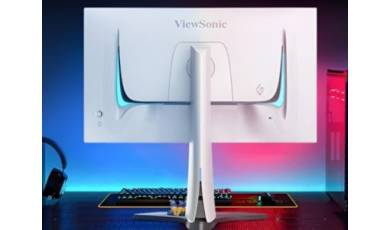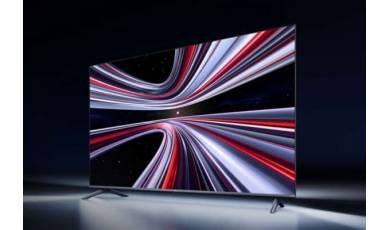Backup Cubot GT89
Mobiles >> Cubot >> Cubot GT89| Specifications | Reviews | Secret codes |
| Unlock phone | Root phone |
| Backup | Flash Firmware | Screenshot |
Backup copy of personal data on Cubot GT89?
A backup copy is needed to save personal data, a list of installed applications, photos taken by the phone camera or received from other users, contacts, notes, music and video files, browser bookmarks, etc..One of the most reliable, and most importantly, the simplest ways to save personal data contained in an Android smartphone is to synchronize data with cloud storage.
Google in the Android software platform provides almost all the possibilities for easy saving and quick recovery of photos, contacts, applications (without credentials), notes and more. It is enough to create a Google account when you first start a phone running an Android operating system of any version, or enter the data of an existing account, and also allow the system to regularly synchronize user data with cloud storage. This opportunity should not be neglected.
A few tips, as always, to have a ready, securely saved copy of the most important for most users - personal photos and contacts, using the capabilities of synchronization with Google.
1. To enable synchronization in Android, go along the path 'Settings' -> 'Google Account' -> 'Sync now' and check the boxes for the data that will be copied to the cloud storage.
2. Contacts can be easily exported using the standard Android application 'Contacts'.
3. To save your own photos, you need to use the standard Android application Google Photos.
Of course, Google isn't the only monopoly on backing up user data from Android devices.

Method 1: TWRP Recovery
The easiest way to create a backup is to use a modified recovery environment for this purpose - custom recovery. The most functional among those solutions is TWRP Recovery.
1. Enter TWRP Recovery, to enter, you need to press the 'Volume Down' key and the 'Power' button together for a few seconds on the switched off device.
2. Then you need to go to the 'Backup' section.
3. In the window that opens, you need to select which sections of memory you want to copy and select a storage location - click the 'Select Storage' button.
4. The best choice for storage space is an SD memory card. In the list of available storage locations, switch the switch to the 'Micro SDCard' position and confirm your choice by clicking on the 'OK' button.
5. After that, you need to swipe to the right in the 'Swipe to Backup' field and the copying process will begin.
6. The files will be copied to the selected media, the progress can be seen using the progress bar, and messages appear in the log field, which inform about the current system actions.
7. The saved files are located in the TWRP / BACKUPS folder on the selected drive, we recommend that you then copy this folder to your PC hard drive..

Method 2: CWM Recovery + ROM Manager Android App
As in the previous method, when creating a backup of the Android firmware, a modified recovery environment will be used, only from another ClockworkMod developer - CWM Recovery. In general, the method is similar to using TWRP. At the same time, CWM Recovery does not have the necessary capabilities for many users to manage the process of creating a backup, for example, it is impossible to select individual partitions to create a backup. But the developers offer their users a good Android application ROM Manager, using the functions of which, you can start creating a backup directly from the operating system.
1. Install and open ROM Manager. On the main screen of the application, in the 'Backup and Restore' section, select 'Backup current ROM'.
2. Set the name of the future system backup and click the 'OK' button.
3. The application works with root rights, so you must provide them upon request. Immediately after that, the device will reboot into recovery and create a backup copy.
4. The backup copy takes a long time. You can watch the progress bar. Cancellation of the procedure is not provided.
Upon completion of the process, the main recovery menu opens. You can reboot into Android by selecting the "reboot system now" item. Backup files created in CWM Recovery are stored in the path specified when it was created in the "clockmod/backup" folder.

Method 3: Titanium Backup app
Titanium Backup is a very powerful yet easy-to-use system backup tool. Using the tool, you can save all installed applications and their data, as well as user information, including contacts, call logs, sms, mms, WI-FI access points and more.
The advantages include the ability to extensively customize the parameters. For example, there is a choice of applications and data that will be saved. To create a full-fledged Titanium Backup backup, you must have root rights.
You need to take care of a safe storage location for the backups you create in advance. The internal memory of the smartphone is not such, it is recommended to use a PC disk, cloud storage or, in extreme cases, a microSD card.
Method 4: SP FlashTool + MTK DroidTools
Using the SP FlashTool and MTK DroidTools applications is one of the most functional ways that allows you to create a truly complete backup of all memory sections. Another advantage of this method is the optional presence of root rights on the device. The method is applicable only for devices built on the Mediatek hardware platform, with the exception of 64-bit processors.
Method 5: Backup the system using ADB
If it is impossible to use other methods or for other reasons, to create a complete copy of the memory partitions of almost any Android device, you can use the OS developers' toolkit - the Android SDK component - Android Debug Bridge (ADB). In general, ADB provides all the possibilities for carrying out the procedure, only root rights on the device are needed.
Summary: Band: GSM 900/1800/1900, 3G; Type: smartphone; Operating system: Android 4.2; Enclosure type: classic; Housing material: plastic; The number of SIM-cards: 2; Mode of operation of multiple SIM cards: alternating; Weight: 215 g; Dimensions (WxHxT): 78x151x10 mm; Screen type: color TFT, 16.78 million colors, touch; Touch screen type: multitouch capacitive; Diagonal: 5.3 inch.; Image size: 540x960; Automatic screen rotation: yes; Ringtones type: polyphonic, MP3 ringtones; Vibrating alert: yes; Camera: 8 million pixels., 3264x2448, built-in flash; Camera options: autofocus; Recording movies: yes (3GP, MPEG4); Front camera: yes, 1.3 million pixels.; Audio: ...
Comments, questions and answers on backup Cubot GT89
Ask a question about Cubot GT89



